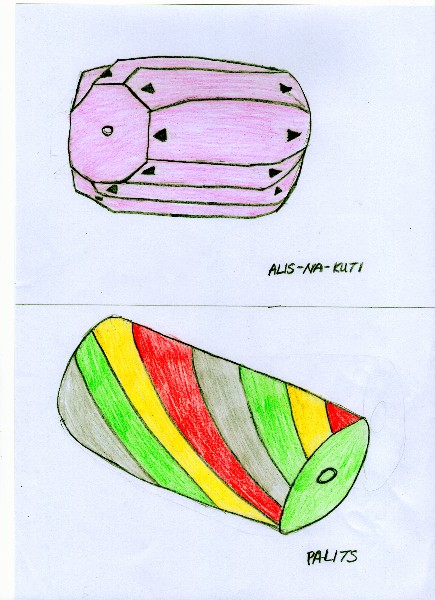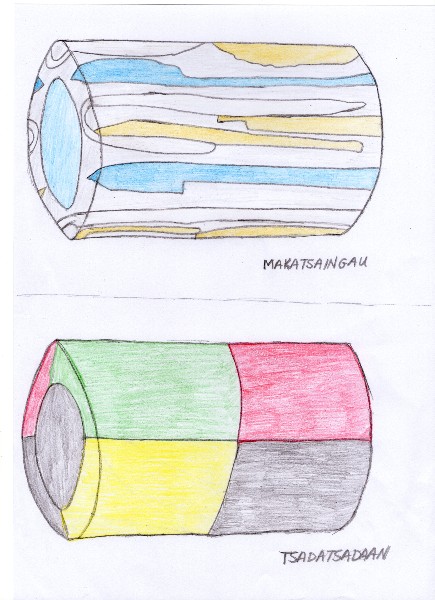Legends of the beads of the Paiwan tribe: Part 6
This is the sixth part of an eight-part article introducing the traditional names, meanings and legends associated with 34 glass beads of the Paiwan tribe.
ALIS-NA-KUTI
This is also called the “moon tooth” bead. This bead is associated with the story of a woman with toothed genitalia. Various cultures have similar stories, which were told as cautionary tales to discourage promiscuity and rape. In the Paiwan version, there was a beautiful princess (which refers to the daughter of a chieftain). She had many suitors and was married many times. This was because each time she married, the groom mysteriously died on the wedding night. Finally, one man devised a clever plan. He got his bride drunk and when she passed out, he inspected her private parts and discovered her secret. The teeth were removed and the couple lived a long and happy life together. These teeth came to be called “moon teeth”.
PALITS (PALIC)
This bead is also referred to as the weaver’s bead or the bead of purity and virtue. In traditional Paiwan society, girls learned daily life skills from a very young age from their female relatives such as their mother and aunts. Once they gained the skills that they needed to take care of their own family, reached the age of marriage and remained pure and chaste, the elders would present them with a Palits bead bracelet or necklace. This symbolized eligibility for marriage. 
MAKATSAINGAU (MAKACAINGAU)
This is also called the bead of wisdom or the “arms and legs” bead. The latter comes from a tribal legend about a couple named Samuakakai and Sakulele. Their first child was born without arms or legs. They didn’t want the other people in their village to know about this so they hid him in a bamboo basket. One day, they noticed that there were a large number of these beads in the basket which eventually became the infant’s arms and legs. Their son grew up to be wise and well liked and was called upon by the great chieftain to help lead the village.
TSADATSADAAN (CADACADAQAN)This is also referred to as the “land” bead. It is associated with land, land rights and prosperity. According to tribal legend, there was a great chieftain who owned a large piece of land. However, he was unable to determine the exact boundaries of his land, and this often caused conflicts with the neighboring chieftain. One day while he was out surveying his land, he caught sight of a group of ants carrying a Tsadatsadaan bead. He followed them some distance to their nest and realized that he had returned home and that the ants had mapped out his territory. He announced this to the neighboring chieftain and ended the land dispute.

Source: Much of the information contained in this article is from research conducted by and provided courtesy of Umass Zingrur.
Note: There are variations in bead shapes, colors and patterns. These illustrations are a reference only and may not provide a completely accurate depiction.